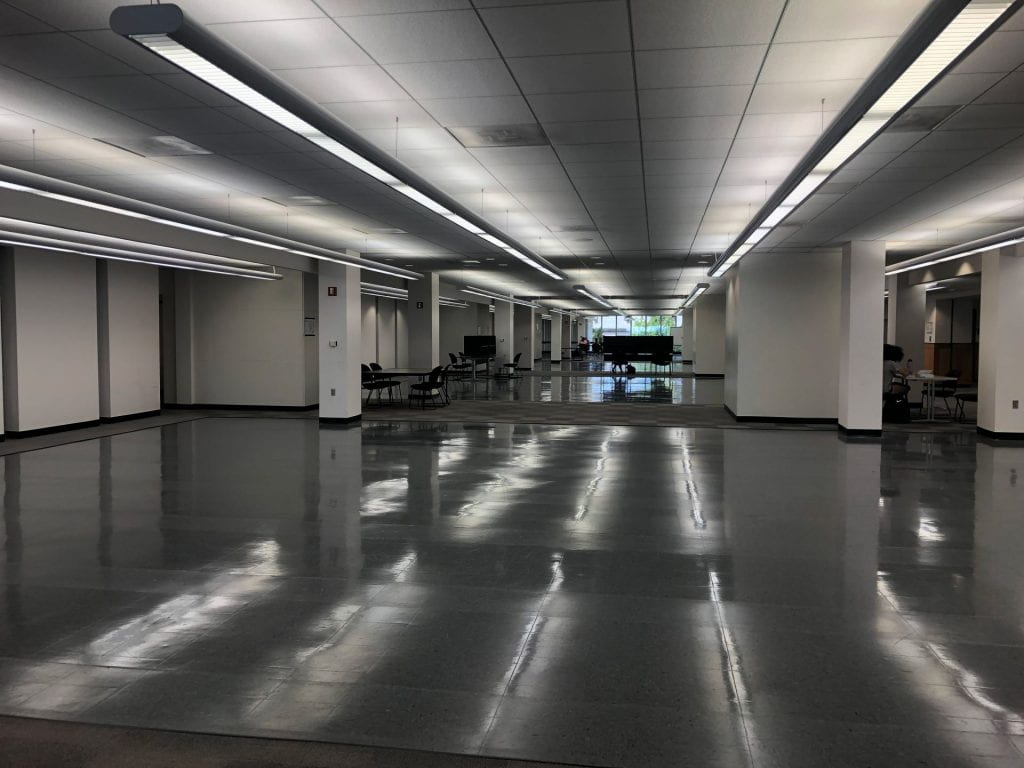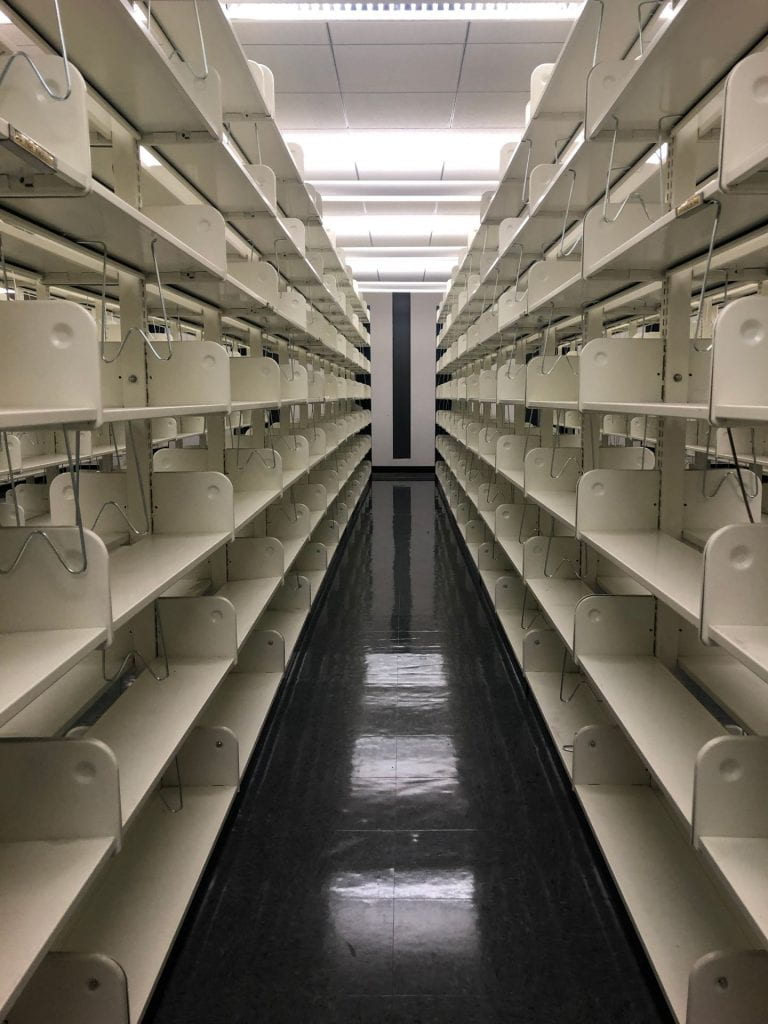UA Libraries Adapt to Digital Resources
As more resources move online, Mullins Library is adapting its spaces for usage in the digital age. While many universities hop on this trend, the U of A is taking a new approach to accessing online resources.

By Hanna Ellington
The Razorback Reporter
In the digital age, Mullins Library is joining other institutions in increasing accessibility to online resources, while also maintaining print assets and physical spaces, librarians said.
More than 1.3 million volumes were removed from Mullins Library in July 2018 into an off-campus annex storage system, said Kelsey Lovewell, director of public relations.
“Moving items to the annex did not increase our need for virtual resources. We’ve been continuously adding to our physical and digital holdings for many years now,” she said.
Books housed in the annex must be requested online and delivered to either Mullins or one of four campus branches.
That system has frustrated some students.
“Honestly, I think the old-school system of just having books in the library that you can go and check out is probably for the best. I feel that because they’re not readily available, people are less likely to use those resources if they know it has to be ordered and delivered,” junior Ethan Barton said.
Mullins Library still houses 200,000 books, Lovewell said, adding that the books were selected to remain based on past usage and relevance to students.
“The books that were selected [for the annex] had not been checked out, I want to say, twice in the past 10 years,” Lovewell said. “We asked for faculty input across campus, we looked at usage statistics, and one important statistic we looked at what books were used in the library but not necessarily checked out.”
Using an off-campus storage space is common for universities, said Dennis Clark, Dean of Libraries. The high-density Library Annex is beneficial for the preservation of the books, with cooler temperatures and lower humidity rates for storage, Clark said.
“There’s not a research university library in this country that doesn’t have off-site storage,” Clark said. “Every significant institution is storing parts of their collection away from their central campus. It’s been the standard for three decades.”
Browsing the off-campus annex is reflective of online shopping, Lovewell said, with books being displayed on online shelves for an experience similar to searching for books in a physical library.
“In today’s day and age, I feel like we’re all very accustomed to online shopping, you know, watching Netflix, browsing for different shows we want to watch. What’s really seamlessly integrated with that is our virtual browsing tool,” Lovewell said. “Our virtual browsing tool puts them on a shelf with other books in the same category so that you can see as though it were in person and open stacks.”
Communication with librarians also has expanded, with lines of communication being available in text messages, phone calls and e-mail form, said Beth Juhl, the Web Services Librarian. Accessibility reaches worldwide as librarians from around the world work in a cooperative group to assist students online.
“We
have a cooperative with librarians all over the world. When we’re asleep, the
librarians in Australia pick up our questions, and when they’re asleep, we pick
up their questions,” Juhl said. “That is a cooperative so students can come
into a chat service and ask a question of a librarian anytime, 24/7.”
The shift toward online integration may seem like a loss of libraries, but that’s not the case to Clark, Juhl or Lovewell.

“If you look at the trend across research libraries and research universities now, the idea that libraries are somehow losing use or losing relevance because of the access to digital resources is widely off,” Clark said. “Every other institution I’ve been in, as we’ve increased the amount of digital resources and as we’ve moved books away from the center part of campus, we’ve seen more use of space.
“Sure, we’ve got books, but we also have spaces that are more engaging,” he said.
As more resources become available online, libraries are using the opportunity to renovate the existing space for improved resources for students.
“We have plans that we will be able to talk about in more depth very soon for a two-phase renovation that will renovate all floors of Mullins in the next five to six years,” Clark said. “So I think what we’ll see is kind of a redefinition of the spaces.”
“Yes, we’ll have a significant print collection in Mullins,” Clark said, “but we’ll also have spaces that are actually made for today’s level of teaching and learning, and spaces that are agile enough for them to evolve in the future.”
Moving forward, Mullins Library is set to transform with the trends of the digital age, Juhl said, but that doesn’t mean libraries will cease to exist.
“I think that they think that a library is just a warehouse of books, which is not what we are. We are services, and we are connections to recorded knowledge,” Juhl said. “That’s never going to go out of style.”
Editor’s note: An earlier version of this article reported that moving items to the Library Annex increased the need for virtual resources. This is a clarification.
